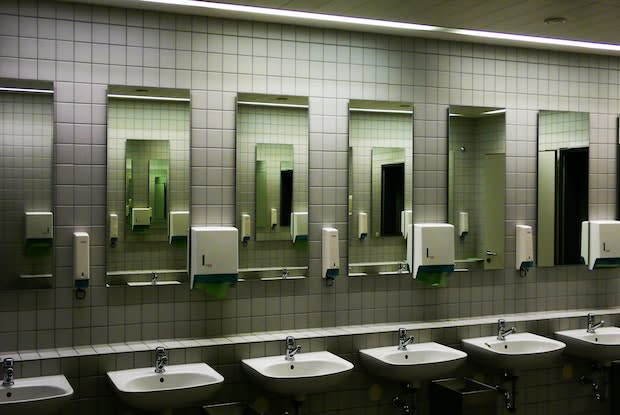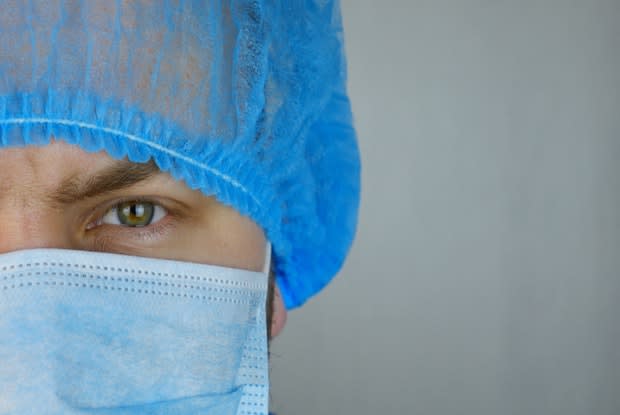Table of Contents
I. What is the Function of the Bladder?
a. Symptoms & Treatments of OAB
a. Symptoms & Treatments of Interstitial Cystitis
IV. Benign Prostatic Hyperplasia (BPH)
a. Symptoms & Treatments of BPH
What is the Function of the Bladder?
Many of us associate the bladder with bathroom breaks, but the urinary system has several complicated processes. The urinary tract is made up of the kidneys, ureters, bladder, sphincter, and urethra. The main goal of this system is to filter blood and create urine as a waste product. When the body takes all the nutrients it needs for energy, excess waste is filtered through the urinary and gastrointestinal systems.
The kidneys eliminate liquid waste called urea. This system also makes sure that sodium, potassium, and water remain in balance. Urea is then carried to the kidneys and is removed with excess nutrients through the urine. [1]
The bladder is a hollow organ located in the lower abdomen. As urine enters the bladder, the organ expands to store urine and then flattens as urine leaves the bladder through the urethra. This process is complicated, and several disorders may occur throughout a person’s life. You may be prescribed several medications if you have overactive bladder, bladder cystitis, or benign prostatic hyperplasia. These drugs may include Toviaz, Myrbetriq (mirabegron), Elmiron (pentosan polysulfate sodium), Vesicare (solifenacin), or Avodart (dutasteride). Learn more about urinary disorders below. OAB is a fairly common condition that creates a frequent urge to urinate. This can begin to disrupt everyday activities. In some cases, you may also unintentionally pass urine, which is known as urinary incontinence. Age is a major risk factor for the development of OAB. When you age, you become more at risk for other disorders like diabetes or enlarged prostate, which can cause bladder function issues. Women may develop OAB after they have children or during menopause. Many with OAB have involuntary contractions of the bladder, which creates an urgent need to rush to the restroom. Some medications can cause OAB as well as consuming excessive amounts of caffeine or alcohol. [2] Symptoms of OAB can severely disrupt a person’s life. This condition is not a normal part of aging, and it is essential to discuss your condition with your doctor. You may be experiencing OAB if you have the following symptoms: Medications like Toviaz, Myrbetriq (mirabegron), and Vesicare (solifenacin) are proven to treat symptoms of OAB. All three of these medications work by relaxing the bladder’s smooth muscles and reducing the urinary frequency and sudden urinary incontinence. You may also have to identify any triggers that may lead to OAB symptoms. [3] OAB is a bothersome condition, but interstitial cystitis (IC) is a more severe problem that can cause chronic pain and bladder pressure. The pain can vary, depending on the cause of your interstitial cystitis. Unfortunately, the cause of this condition is unknown but is typically caused by several factors at once. For many, a defect in the epithelium of the bladder can cause IC. The epithelium is the bladder's protective lining, and if there is a defect in this area, toxic substances can enter the bladder and irritate the bladder wall. Interstitial cystitis may also be caused by an allergy, genetic factors, or an autoimmune problem. Women over 30 are more likely to get this condition. [4] Everyone with IC may have different symptoms and different triggers that cause flare-ups. Those with IC may also have long periods without symptoms. If you’re experiencing chronic bladder pain, you should talk to your doctor. Symptoms may include: If you are diagnosed with interstitial cystitis, your doctor will likely start you on a medication treatment plan. Because IC is so painful, medications are typically necessary to reduce symptoms. Elmiron (pentosan polysulfate sodium) is recommended to treat bladder discomfort as well as pain and pressure. Elmiron, also known as pentosan polysulfate sodium, works by protecting the bladder from irritants in the urine. Unlike other pain relievers, Elmiron does not reduce inflammation. It creates a barrier on the bladder wall to prevent irritation. [5] BPH is a male condition that is also known as prostate gland enlargement. Similar to other bladder issues, BPH causes uncomfortable urinary symptoms. The prostate never stops growing in the male body, which does not cause issues in most men. But in some cases, the prostate can press against the ureters and increase urination. It can block the flow of urine and cause bladder, urinary tract, or kidney problems over time. Older men are more likely to experience BPH. You should talk to your doctor even if you are not bothered by the urinary symptoms. Getting treatment can prevent the development of complications down the road. [6] The size of the prostate does not affect the severity of symptoms. Men with a slightly enlarged prostate can have severe symptoms, and very enlarged prostates can have mild symptoms. Common symptoms of BPH include: Avodart (dutasteride) and Flomax CR (tamsulosin) can assist in symptoms of BPH. Surgery used to be the only option for BPH, but medications have come a long way in reducing urinary symptoms. Now, medicine is the most common treatment option for BPH. These medications are alpha-blockers that relax the muscles in the bladder and prostate. This makes it easier to urinate and improves the flow of urine. [7] If you feel like you are experiencing urinary issues, talk to your doctor right away. You can visit Canada Pharmacy Delivery to find discount bladder medications through a Canadian pharmacy. The content in this article is intended for informational purposes only. This website does not provide medical advice. In all circumstances, you should always seek the advice of your physician and/or other qualified health professionals(s) for drug, medical condition, or treatment advice. The content provided on this website is not a substitute for professional medical advice, diagnosis, or treatment.
Overactive Bladder (OAB)
a. Symptoms & Treatment of OAB

Interstitial Cystitis
a. Symptoms & Treatment of Interstitial Cystitis

Benign Prostatic Hyperplasia (BPH)
a. Symptoms & Treatment of BPH
